Let me know what you think
Presumed Problem
The British were boarding American vessels, taking sailors believed to be British, including some Americans, and forcing them into service in the British navy: a practice known as impressment.
Solution
Declare war on the world’s great naval power and make them stop impressing our seamen.
Narrative
The 2003 invasion of Iraq was not the first time the USA used war as the solution to a non-existent problem. For another example, we’ll look at one of America’s oddest wars, one that is little understood by Americans: the War of 1812.
 At the opening of the 19th century, Britain was caught up in a long, expensive war with Napoleon Bonaparte and France. America was theoretically neutral, which offended both parties, but American merchantmen were actively supplying France much of the time. Matters were further complicated by divided loyalties among American citizens. For many, England was still felt as their cultural homeland, despite political independence. Others felt a special loyalty to the land of LaFayette for their support of the American fight for independence decades earlier. Still others saw an opportunity for money to be made.
At the opening of the 19th century, Britain was caught up in a long, expensive war with Napoleon Bonaparte and France. America was theoretically neutral, which offended both parties, but American merchantmen were actively supplying France much of the time. Matters were further complicated by divided loyalties among American citizens. For many, England was still felt as their cultural homeland, despite political independence. Others felt a special loyalty to the land of LaFayette for their support of the American fight for independence decades earlier. Still others saw an opportunity for money to be made.
American-British relations became more strained through the policy of impressment. As the French war dragged on, a number of British seamen had decided to desert the British Navy sign on with American ships for better pay and less danger. At the same time, Britain was feeling the pinch of diminishing  resources–and the lack of able-bodied seamen was part of the problem. The British solution was to begin boarding American commercial ships at sea and capturing any crew members who seemed to be British–including some American citizens. The captured seamen were impressed into service on British ships of the line. American unhappiness with Britain also involved economic issues, but outrage at the impressment of American seamen was a powerful rallying cry.
resources–and the lack of able-bodied seamen was part of the problem. The British solution was to begin boarding American commercial ships at sea and capturing any crew members who seemed to be British–including some American citizens. The captured seamen were impressed into service on British ships of the line. American unhappiness with Britain also involved economic issues, but outrage at the impressment of American seamen was a powerful rallying cry.
The British policy of stopping American merchantmen at sea, which laid the grounding for inspecting the crews and seizing any believed to be British, was known as “Orders in Council,” first enacted on January 7, 1807. American official protests to Britain were to no avail, and the British continued stopping American commercial 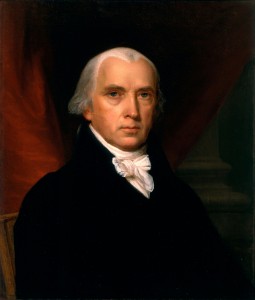 vessels at sea and impressing any seamen who looked and sounded British. President James Madison became convinced that more deliberate action was needed, and he lobbied Congress for a declaration of war against the most powerful nation on earth. Congress was reluctant, but Madison’s urging finally paid off with a divided vote in his favor, and he was able to sign a declaration of war on June 18, 1812.
vessels at sea and impressing any seamen who looked and sounded British. President James Madison became convinced that more deliberate action was needed, and he lobbied Congress for a declaration of war against the most powerful nation on earth. Congress was reluctant, but Madison’s urging finally paid off with a divided vote in his favor, and he was able to sign a declaration of war on June 18, 1812.
The war that followed was not America’s most gallant. Initially, Britain ignored the declaration of war as something of a farce. America’s navy was hardly a threat to the British fleet. America decided to make the war more real through several invasions of Canada. All failed, despite a relative lack of support from Britain for the locals. Canadians celebrate the War of 1812 as their own War for Independence. Americans were the bad guys in that version of the war.
Once the British had defeated Napoleon’s troops in Europe, they were able to turn their attention to the annoying fuss across the pond. As you may recall, the British invaded Maryland, marched to the nation’s capital in Washington, trashed the city and burned the White House. You may  have read about FLOTUS Dolly Madison’s heroism as she stayed in the White House until she was able to rescue important documents and paintings–fleeing the city just ahead of the British firebugs.
have read about FLOTUS Dolly Madison’s heroism as she stayed in the White House until she was able to rescue important documents and paintings–fleeing the city just ahead of the British firebugs.
So, all things considered, the war wasn’t going really well for the Americans. But I’m sure you know of the one shining exception: thanks in large part to singer Johnny Horton. The Battle of New Orleans, culminating on January 8, 1815, was America’s finest engagement in the war. Overwhelming British forces under the command of the great British general, Edward Pakenham, faced off against General Andrew Jackson and a smaller, less professional, less experienced American force.
 The final score sheet for the battle was as lopsided as such things can be. The British lost 2600 men: 700 of them died in battle, 1400 were wounded, and another 500 were taken prisoner. On the other side, 7 Americans died and another 6 were wounded.
The final score sheet for the battle was as lopsided as such things can be. The British lost 2600 men: 700 of them died in battle, 1400 were wounded, and another 500 were taken prisoner. On the other side, 7 Americans died and another 6 were wounded.
Another oddity about the January 8th, 1815, battle had to do with timing. Being fought 167 years before the advent of the internet, 110 years before television, and 43 years before the transatlantic telegraph cable, the Battle of New Orleans was fought two weeks after the Peace Treaty of Ghent ended the war.
.
Was the Problem Real?
What qualifies the War of 1812 for inclusion in this project? While the practice of impressment had been a “recruitment” policy for the British navy for centuries, American Independence saw treaty procedures for the return of any Americans falsely impressed in the belief that they were British. (The common language and lack of formal birth certificates made some degree of erroneous impressment inevitable.) John Deeben argues that the size of the problem was much less than commonly imagined. Moreover, he offers federal archival evidence that the United States was also impressing seamen into service and, like the British, made mistakes as regards the nationality of their new recruits.
In June, 1812, in response to American complaints, Britain repealed the “Orders in Council” that allowed them to board American ships at sea. Two days later, James Madison signed the declaration of war. Obviously the U. S. did not know about the suspension of the Orders until after war had been declared, but it was known before serious fighting began.
All historians seem to agree that the British stopped the practice of impressment altogether upon the defeat of Napoleon in 1814. Thus, the presumed cause of the war had completely disappeared prior to the invasion of Maryland, the burning of Washington, and the Battle of New Orleans. While impressment, real and imagined, may have been a key problem for which war was the intended solution, it ceased as a problem before the war commenced and was surely not a problem that could be solved by the most dramatic events of the war.
Negative Consequences
Well, let’s see: the British burned the White House and most of Washington. There was expense, destruction, and loss of life throughout the young nation.
While Britain may have learned to take the USA a little more seriously, Canada learned not to. Any visions the Americans had for annexing their northern neighbors were dashed in the War of 1812.
I mentioned earlier that President Madison had some trouble getting Congressional approval for the way, and the division of opinion was largely regional. New England was generally opposed, and the war’s conclusion left some bitter feelings on both sides of the issue. To some degree, the Southern hawks viewed Northern opposition as disloyalty to the nation.
The South suffered in another way. Prior to the war, they were able to maintain a view that their slaves were contented with their status. However, when the British offered freedom to any slaves who would join them, and many slaves deserted their masters and did precisely that. What must have been a disappointment to slaveholders was a preview to a similar disenchantment later on, in the Civil War.
Compared to other American wars, the negative consequences of the War of 1812 were relatively mild, but we need to remember it was a solution to a problem that didn’t really exist.
© Earl Babbie 2016, all rights reserved Terms of Service/Privacy
Sources
An excellent history of the War of 1812 is Troy Bickham’s The Weight of Vengeance: The United States, the British Empire, and the War of 1812, New York: Oxford University Press, 2012.



 practice so high that few clinics can satisfy the requirements. The Guttmacher Institute provides an overview.
practice so high that few clinics can satisfy the requirements. The Guttmacher Institute provides an overview.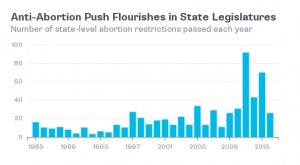
 event that emergency medical care is needed. Actually, President Reagan and the U. S. Congress solved this problem in its Emergency Medical Treatment and Active Labor Act (EMTALA) of 1986, requiring that emergency rooms treat patients in need–even if they aren’t citizens or are unable to pay. It doesn’t matter if their physician has admitting privileges or even if they have a physician.
event that emergency medical care is needed. Actually, President Reagan and the U. S. Congress solved this problem in its Emergency Medical Treatment and Active Labor Act (EMTALA) of 1986, requiring that emergency rooms treat patients in need–even if they aren’t citizens or are unable to pay. It doesn’t matter if their physician has admitting privileges or even if they have a physician.
 abortion anger has been focused specifically on one provider: Planned Parenthood. Discussions of this matter have revealed that abortions constitute three percent of PP’s services. Primarily they offer cancer screening and other medcal exams and treatments. As their name suggests, much of their work is in relation to family planning, offering a variety of contraceptive methods.
abortion anger has been focused specifically on one provider: Planned Parenthood. Discussions of this matter have revealed that abortions constitute three percent of PP’s services. Primarily they offer cancer screening and other medcal exams and treatments. As their name suggests, much of their work is in relation to family planning, offering a variety of contraceptive methods.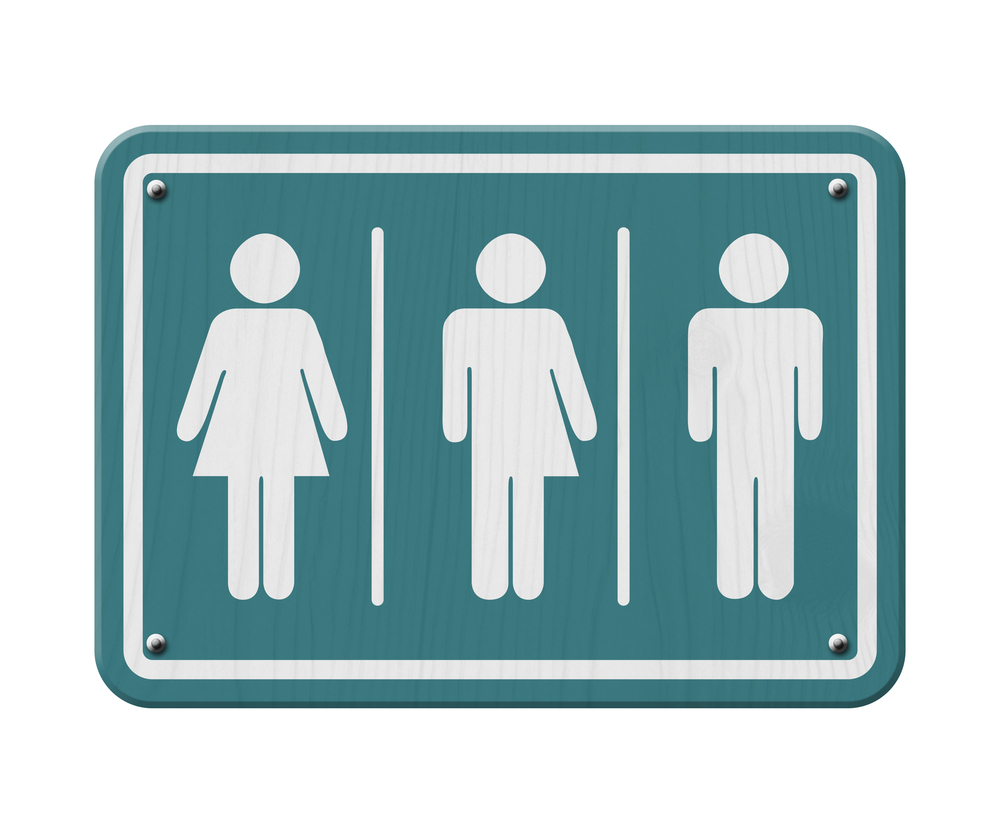
 was young, some girls were labeled “tomboys,” meaning they engaged in the rough and tumble behavior more associated with boys. While parents might sometimes be concerned, it was generally felt that such girls would eventually “grown out of it,” that they were just “going through a phase.” That was often true.
was young, some girls were labeled “tomboys,” meaning they engaged in the rough and tumble behavior more associated with boys. While parents might sometimes be concerned, it was generally felt that such girls would eventually “grown out of it,” that they were just “going through a phase.” That was often true. interests and desires more associated with girls, even though they are likely to suffer ridicule or worse if they play with dolls and wear dresses and make-up. And there are individuals born biologically female, who are certain they were meant to be male. And they are clear it is not a phase they are going through. It lasts well into adulthood.
interests and desires more associated with girls, even though they are likely to suffer ridicule or worse if they play with dolls and wear dresses and make-up. And there are individuals born biologically female, who are certain they were meant to be male. And they are clear it is not a phase they are going through. It lasts well into adulthood. and its “solution” is North Carolina’s HB2 (Session Law 2016-3):
and its “solution” is North Carolina’s HB2 (Session Law 2016-3): Women’s Room would result in the display or viewing of opposite-sex genitalia. Apparently there’s something about just knowing that a biological man just entered the facility, but it seems unlikely that you would know. No woman is likely to call the police if her public facility is visited by the person to the right of this paragraph.
Women’s Room would result in the display or viewing of opposite-sex genitalia. Apparently there’s something about just knowing that a biological man just entered the facility, but it seems unlikely that you would know. No woman is likely to call the police if her public facility is visited by the person to the right of this paragraph. On the other hand, I could understand that reaction if this guy came breezing in. As you undoubtedly figured out, the person above is a trans woman, while the one to the left is a trans man. More to the point, I imagine that those women who say they would feel uncomfortable if a trans woman entered their Women’s Restroom, have already had that happen, more than once, but they didn’t know it. Hence, they weren’t uncomfortable after all.
On the other hand, I could understand that reaction if this guy came breezing in. As you undoubtedly figured out, the person above is a trans woman, while the one to the left is a trans man. More to the point, I imagine that those women who say they would feel uncomfortable if a trans woman entered their Women’s Restroom, have already had that happen, more than once, but they didn’t know it. Hence, they weren’t uncomfortable after all.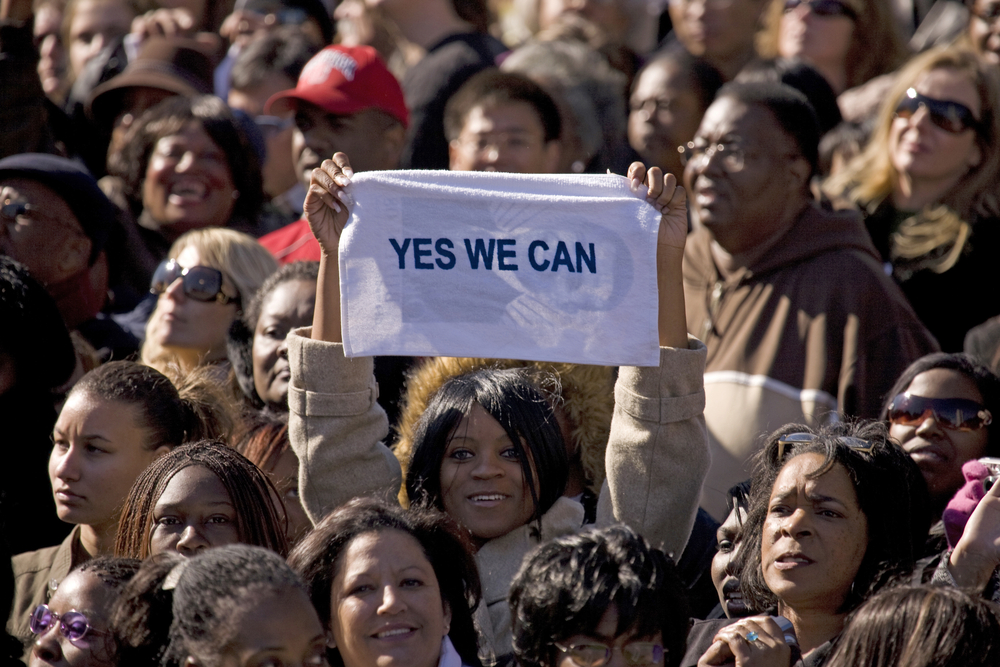







 Like many states–perhaps all–Colorado had a serious problem with unintended teen pregnancies. But unlike other states, Colorado had found a powerful solution.
Like many states–perhaps all–Colorado had a serious problem with unintended teen pregnancies. But unlike other states, Colorado had found a powerful solution. and make the uterine lining too thin for egg implantation. Because IUDs stay in place for five to 10 years, they’re easier to comply with than taking daily birth control pills.
and make the uterine lining too thin for egg implantation. Because IUDs stay in place for five to 10 years, they’re easier to comply with than taking daily birth control pills. failure.Consider abstinence-only “sex education” programs in the nation’s schools. Despite the millions still being spent on programs that simply urge teens not to have sex, there is no peer-reviewed research indicating such programs have any positive effect. However, the problem of teen pregnancy was and is a real one, and the Colorado program of education and IUDs was a huge success.
failure.Consider abstinence-only “sex education” programs in the nation’s schools. Despite the millions still being spent on programs that simply urge teens not to have sex, there is no peer-reviewed research indicating such programs have any positive effect. However, the problem of teen pregnancy was and is a real one, and the Colorado program of education and IUDs was a huge success. were abortifacients, which raised the image of women as “walking abortion factories.” Since he and his supporters were dead set against abortion, it was clear that IUDs had to go. Ultimately, the anti-abortion faction was successful in blocking public funding for the program, though private funds were found to continue it. IUDs, per se, were not outlawed.
were abortifacients, which raised the image of women as “walking abortion factories.” Since he and his supporters were dead set against abortion, it was clear that IUDs had to go. Ultimately, the anti-abortion faction was successful in blocking public funding for the program, though private funds were found to continue it. IUDs, per se, were not outlawed. This was the same logic used by Hobby Lobby in their refusal to let employees receive IUDs and some other contraceptives under the Affordable Care Act. Being complicit in their employees using IUDs allegedly violated their corporate religious values. The U. S. Supreme Court majority agreed with that reasoning.
This was the same logic used by Hobby Lobby in their refusal to let employees receive IUDs and some other contraceptives under the Affordable Care Act. Being complicit in their employees using IUDs allegedly violated their corporate religious values. The U. S. Supreme Court majority agreed with that reasoning. than masturbation, a priest’s vow of celibacy, or “Not tonight, dear. I have a headache.”
than masturbation, a priest’s vow of celibacy, or “Not tonight, dear. I have a headache.”
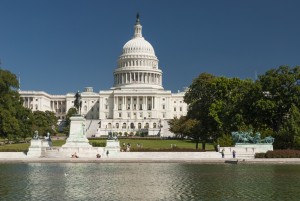
 The federal restriction, DOMA, was increasingly challenged in court. In 2011, the Obama administration announced that they regarded DOMA as unconstitutional and said they would not defend it in court.
The federal restriction, DOMA, was increasingly challenged in court. In 2011, the Obama administration announced that they regarded DOMA as unconstitutional and said they would not defend it in court. granted to a surviving spouse. Since they were not of different sexes and thus were not regarded as “married” by the U. S. federal government, Windsor was charged hundreds of thousands of dollars in federal tax. Two federal courts ruled in Windsor’s favor, and the Supremes finally agreed as well. More specifically, five of the justices favored Windsor’s case and that was enough to overthrow the Defense of Marriage Act.
granted to a surviving spouse. Since they were not of different sexes and thus were not regarded as “married” by the U. S. federal government, Windsor was charged hundreds of thousands of dollars in federal tax. Two federal courts ruled in Windsor’s favor, and the Supremes finally agreed as well. More specifically, five of the justices favored Windsor’s case and that was enough to overthrow the Defense of Marriage Act.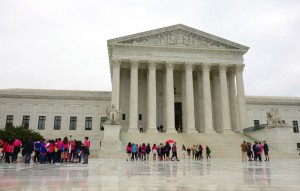 This pattern of gradual change was dramatically altered on June 26, 2015, when the U. S. Supreme Court ruled that states could not ban same-sex marriage, and gay marriage became legal +, letting the USA join 20 other nations in that respect. To be precise, again, five of the nine justices ruled in favor of same-sex marriage, while the other four dissented with varying degrees of outrage.
This pattern of gradual change was dramatically altered on June 26, 2015, when the U. S. Supreme Court ruled that states could not ban same-sex marriage, and gay marriage became legal +, letting the USA join 20 other nations in that respect. To be precise, again, five of the nine justices ruled in favor of same-sex marriage, while the other four dissented with varying degrees of outrage. By now, there have so many legal, gay marriages that we are in a position to assess the damages wrought by this dramatic social experiment with equality.
By now, there have so many legal, gay marriages that we are in a position to assess the damages wrought by this dramatic social experiment with equality. I should acknowledge the rumor about a baker who had to work so many late nights to meet the expanded demand for wedding cakes that his wife left him. I cannot confirm that story, however.
I should acknowledge the rumor about a baker who had to work so many late nights to meet the expanded demand for wedding cakes that his wife left him. I cannot confirm that story, however. lived together and sometimes formed life-long commitments, but they were “significant others,” “partners,” “longtime companions,” or “special friends”—not spouses. Some degree of embarrassment over second-class citizenship was inevitable.
lived together and sometimes formed life-long commitments, but they were “significant others,” “partners,” “longtime companions,” or “special friends”—not spouses. Some degree of embarrassment over second-class citizenship was inevitable.

 the World Trade Center towers, destroying them, with much more loss of
the World Trade Center towers, destroying them, with much more loss of
 Saddam’s threat, they asked, “Where’s the smoking gun?” NSA Director Condoleezza Rice replied “We don’t want the smoking gun to be a mushroom cloud.” That seemed a sufficient answer for some.
Saddam’s threat, they asked, “Where’s the smoking gun?” NSA Director Condoleezza Rice replied “We don’t want the smoking gun to be a mushroom cloud.” That seemed a sufficient answer for some.
 especially Iraqis, killed is vastly larger, though the estimates vary widely, from tens of thousands to over a million. The same Defense Department report counted 31,951 Americans wounded in action, creating an as-yet insoluble problem for the Veterans Administration and civilian health care facilities. Many feel the nation has effectively turned its back on the returning wounded—except on Memorial Day, when politicians and others proclaim gratitude and respect all around.
especially Iraqis, killed is vastly larger, though the estimates vary widely, from tens of thousands to over a million. The same Defense Department report counted 31,951 Americans wounded in action, creating an as-yet insoluble problem for the Veterans Administration and civilian health care facilities. Many feel the nation has effectively turned its back on the returning wounded—except on Memorial Day, when politicians and others proclaim gratitude and respect all around. intention, a compelling case could and was made for it. The disruption of order in Iraq has spread through the area, most notably to Syria. Today, the Daesh (aka ISIL) have little trouble convincing young Muslims that America is set on destroying Islam, while, ironically, most of Daesh’s victims are fellow Muslims.
intention, a compelling case could and was made for it. The disruption of order in Iraq has spread through the area, most notably to Syria. Today, the Daesh (aka ISIL) have little trouble convincing young Muslims that America is set on destroying Islam, while, ironically, most of Daesh’s victims are fellow Muslims.
 mistreatment of women. In the New Testament, we find the Apostle Paul speaking against homosexuality at times, but he was equally concerned with wives surrendering to the authority of their husbands. In other words, while it is possible to find Biblical injunctions against homosexuality, it’s not a major theme. It didn’t make the Ten Commandments, for example, though adultery did.
mistreatment of women. In the New Testament, we find the Apostle Paul speaking against homosexuality at times, but he was equally concerned with wives surrendering to the authority of their husbands. In other words, while it is possible to find Biblical injunctions against homosexuality, it’s not a major theme. It didn’t make the Ten Commandments, for example, though adultery did. rites of passage. Some societies mark passage to male adulthood with a ritual deflowering of boys by older men. When I was a university professor, one of my female students introduced me to the term, LUG: Lesbian Until Graduation. The number of people having same-sex sexual encounters has always exceeded the number being identified or self-identifying as solely homosexual or even bisexual.
rites of passage. Some societies mark passage to male adulthood with a ritual deflowering of boys by older men. When I was a university professor, one of my female students introduced me to the term, LUG: Lesbian Until Graduation. The number of people having same-sex sexual encounters has always exceeded the number being identified or self-identifying as solely homosexual or even bisexual.
 Most would regard vaginal and anal sex as more disease-risky, particularly when tissue lesions occur. (The same would be true of oral sex, but it’s much less likely.) And in all cases, the risks of disease are radically reduced by the use of condoms. There is no agreement that anal sex is more dangerous than vaginal sex.
Most would regard vaginal and anal sex as more disease-risky, particularly when tissue lesions occur. (The same would be true of oral sex, but it’s much less likely.) And in all cases, the risks of disease are radically reduced by the use of condoms. There is no agreement that anal sex is more dangerous than vaginal sex.
 Even where homosexuals are not being executed by the government, even today, they may be killed by extra-legal actions. Matthew Shephard is a name that should never be forgotten. On October 6, 1998, the young University of Wyoming student was at the Fireside Lounge in Laramie, when two other young men pretended to be gay and lured him outside with the intention of robbing him. Once outside, their greed turned to rage and they began beating and torturing Shephard. Eventually, they tied their comatose victim crucifixion-style to a fence and left him there to die. He was discovered 18 hours after his beating and was taken to a hospital where he died six days later.
Even where homosexuals are not being executed by the government, even today, they may be killed by extra-legal actions. Matthew Shephard is a name that should never be forgotten. On October 6, 1998, the young University of Wyoming student was at the Fireside Lounge in Laramie, when two other young men pretended to be gay and lured him outside with the intention of robbing him. Once outside, their greed turned to rage and they began beating and torturing Shephard. Eventually, they tied their comatose victim crucifixion-style to a fence and left him there to die. He was discovered 18 hours after his beating and was taken to a hospital where he died six days later. “solution” of stamping out homosexuality. Gays have been and still are discriminated against in a variety of ways: in employment, commercial service, and just about anywhere people interact with one another in society. The persisting reflection of the anti-sodomy mentality still treats gays as second-class citizens, somewhat similar to the treatment of racial and ethnic minorities.
“solution” of stamping out homosexuality. Gays have been and still are discriminated against in a variety of ways: in employment, commercial service, and just about anywhere people interact with one another in society. The persisting reflection of the anti-sodomy mentality still treats gays as second-class citizens, somewhat similar to the treatment of racial and ethnic minorities.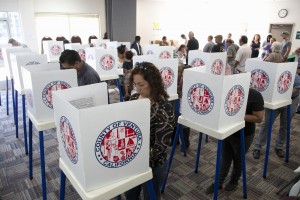
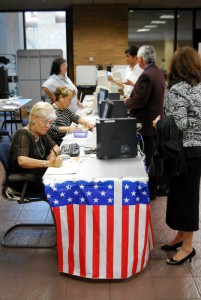
 concealed handgun license or a voter card provided by the state. It does not include student IDs as a valid form of photo identification. It also requires voters who were forced to cast a provisional ballot to produce a valid piece of identification within six days of the election in which they hope to vote.
concealed handgun license or a voter card provided by the state. It does not include student IDs as a valid form of photo identification. It also requires voters who were forced to cast a provisional ballot to produce a valid piece of identification within six days of the election in which they hope to vote.
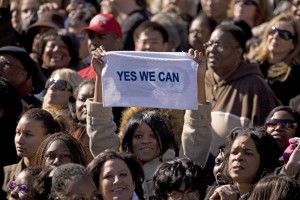 y Department of Motor Vehicle office. Shortly thereafter, the Republican governor announced plans to shut down all the DMV offices in eight of ten counties with predominantly African American residents–known as Alabama’s Black Belt–also known for a strong tendency to vote Democratic. The governor rescinded his plan in response to strong negative publicity.
y Department of Motor Vehicle office. Shortly thereafter, the Republican governor announced plans to shut down all the DMV offices in eight of ten counties with predominantly African American residents–known as Alabama’s Black Belt–also known for a strong tendency to vote Democratic. The governor rescinded his plan in response to strong negative publicity.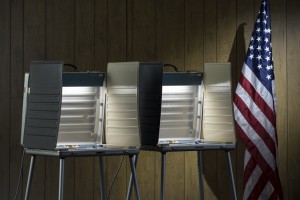 concluded that 35,000 eligible voters were deterred from voting by the warning anyway. They were convinced they would be turned away from the polls.
concluded that 35,000 eligible voters were deterred from voting by the warning anyway. They were convinced they would be turned away from the polls. his driver’s license lapse and found his identification card as a Texas Christian University faculty member would no longer legitimize him as a legal citizen-voter in the Lone Star state. Ironically, the suspicious would-be voter was Jim Wright, who served 34 years as a U. S. Congressman from Texas, and from 1987 to 1989, was the Speaker of the United States House of Representatives. Still, you can’t be too careful.
his driver’s license lapse and found his identification card as a Texas Christian University faculty member would no longer legitimize him as a legal citizen-voter in the Lone Star state. Ironically, the suspicious would-be voter was Jim Wright, who served 34 years as a U. S. Congressman from Texas, and from 1987 to 1989, was the Speaker of the United States House of Representatives. Still, you can’t be too careful. would have to bear the cost of providing the IDs without charge. Other states have experienced similar costs.
would have to bear the cost of providing the IDs without charge. Other states have experienced similar costs.
 to stop me from selling you my blank absentee ballot. Or you could hold a gun to my head while dictating how I should vote—a practice frowned on in most polling places. Or maybe you are just voting the way someone tells you to.
to stop me from selling you my blank absentee ballot. Or you could hold a gun to my head while dictating how I should vote—a practice frowned on in most polling places. Or maybe you are just voting the way someone tells you to.